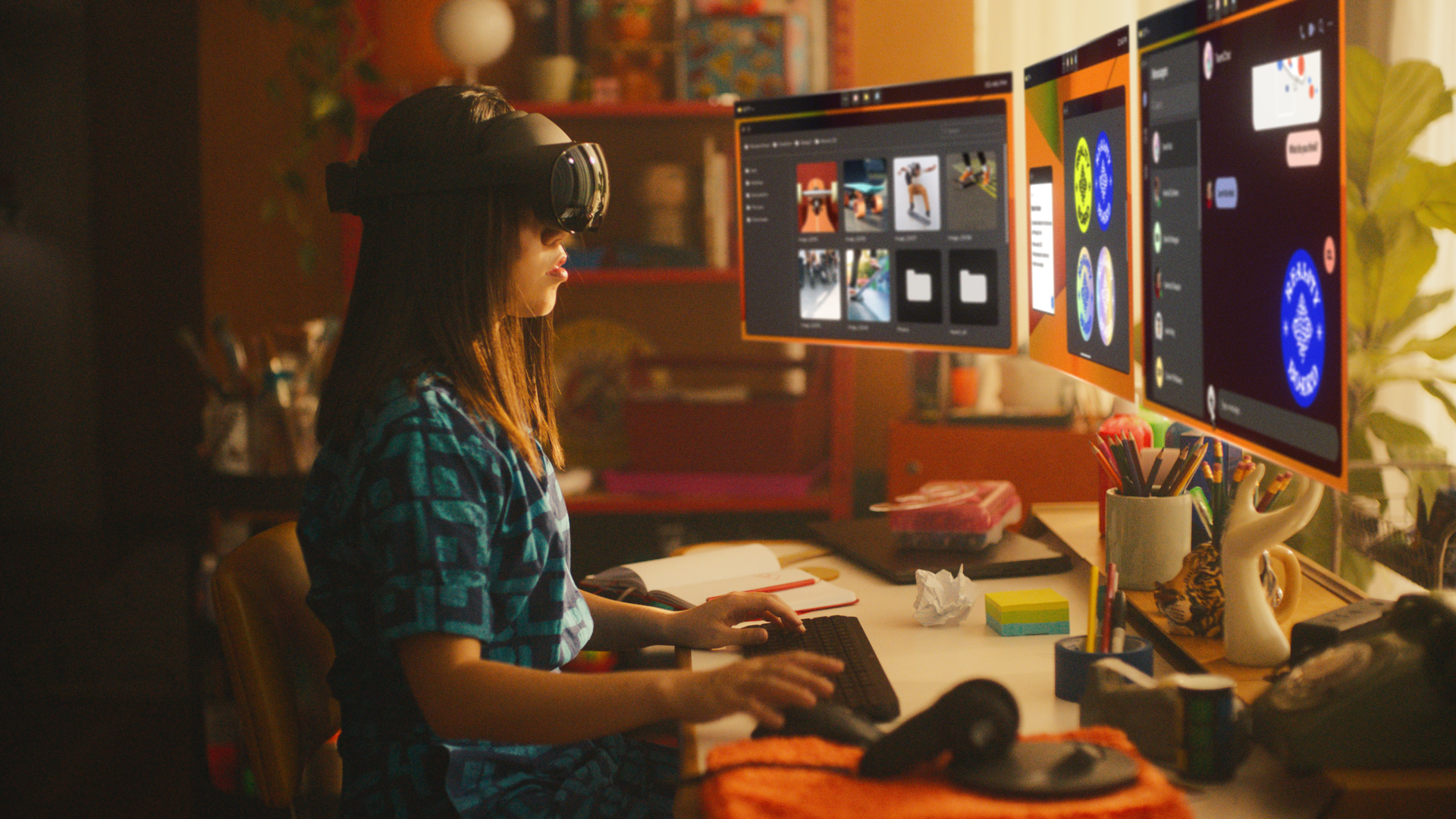The Oculus Quest 3 may be several months away from being unveiled, but Meta has already teased that it will get a feature that’s currently exclusive to its Meta Quest Pro: full-color mixed-reality.
While the Oculus Quest 3, Meta’s next VR headset, isn’t expected to be unveiled until October this year – which is when we expect Meta Connect 2023 will happen – a few details have been revealed already. For a start, Meta CEO Mark Zuckerberg has confirmed that the Quest 3 will be much cheaper than the $1,500 / £1,500 / AU$2,450 Meta Quest Pro, saying that it will be in the “price range of $300, $400, or $500.”
Additionally, leaked CAD models may have shown us the basic design of the upcoming device, which looks like a slimmer Oculus Quest 2 – likely because the Quest 3 will adopt pancake lens optics that are more compact than its predecessor’s lenses.
And now we also know that Meta’s Quest 3 will have color passthrough, which enables the user to see the real world in full color while wearing the headset, just like the Quest Pro, with Zuckerberg confirming this in Meta’s recent Q4 2022 investor earnings call (opens in new tab).
Specifically, he said that “later this year, we’re going to launch our next generation consumer headset, which will feature Meta Reality.” The next-gen consumer headset he references is the Quest 3 (or at least the headset we’re calling the Quest 3, as it hasn’t officially been named yet) and Meta Reality is the full-color mixed reality functionality that debuted on the Quest Pro.
It’s not entirely clear how the Quest 3 will incorporate Meta Reality, though it’s thought the device will use depth sensors to help it map out the real-world space around the wearer, rather than relying on the Quest Pro’s system, which uses multiple outward-facing cameras.

In our Meta Quest Pro review, we felt that color passthrough was a cool addition to the headset, but that it wasn’t particularly well executed. The passthrough footage that’s shown to the wearer is very grainy, and right now there’s not anything of note you can do with mixed reality – certainly nothing that warrants paying the Pro’s higher price over the Quest 2.
However, if Meta wants to include the feature with the Quest 3, and focus more of its attention on MR, then this lack of support will likely change. By the time the Quest 3 launches, we’ll probably see a slew of mixed-reality or (as Meta calls it) ‘Meta Reality’ experiences being made available on its hardware, though we’ll have to wait and see exactly what Meta and its collaborators launch over the coming months.
Oculus Quest 3: not just a cheaper Quest Pro
If you’ve gone out and bought a Meta Quest Pro – either at full price or even with a discount thanks to the recent Quest Pro deal that Meta offered – then the news that its features are coming to the Quest 3 may worry you. Don’t worry though; Meta isn’t making all of your device’s features available in its next-budget-friendly offering.
Meta has previously hinted that its Quest Pro line will offer users premium features that will be unavailable in its cheaper Quest devices – at least for a few iterations. Now its CTO Andrew Bosworth has reaffirmed that the Quest Pro’s face- and eye-tracking capabilities will be locked to the more expensive devices for “the next year, two years, three years honestly.”
Bosworth revealed that news in the latest AMA he hosted on his Instagram page (opens in new tab) in which he added that the main tradeoff that comes with face tracking is cost – it’s expensive to cram in the extra cameras and processing power needed for the feature. So while the aim is to eventually bring face and eye tracking to the cheaper Quest line, right now it’s not possible to do that and also keep those headsets at a consumer-friendly price.
If you’re keen to experience eye tracking, but you don’t want to invest in the Meta Quest Pro, your best bet might be to opt for Sony’s PSVR2 headset – check out our rundown of everything you need to know about the PlayStation VR 2 headset to find out more about it.




